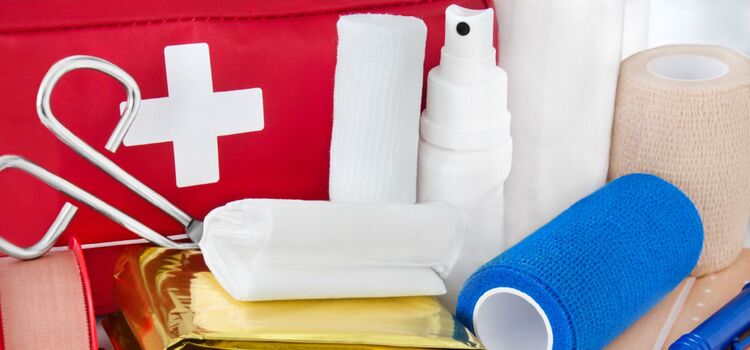
Vehicle Safety Precautions for Emergency Responders
Emergency vehicle drivers are an essential component in saving the lives of others, as they are responsible for driving the truck that carries all equipment and personnel necessary to assist those in need. If drivers cannot successfully get the vehicle to an emergency scene, personnel cannot help civilians and/or protect property.
In order to deliver both personnel and equipment, drivers must always have safety in mind. In addition, emergency vehicle drivers must use a high standard of care for the general public who are also using the road by trying to reduce the risk of injury to others.
Vehicle Inspections
Before entering the vehicle and starting it up, walk around the entire truck to make sure that all equipment is secured, all compartment doors are securely shut and all obstructions are safely moved out of the way.
- Inspect all four sides and the top of the vehicle.
- Verify clearance on the right and rear of the vehicle with the person riding in the officer position. This check should be done before moving in both emergency and non-emergency situations.
- Once in the vehicle, wear your safety belt.
Warning Devices and Responding to Emergencies
When responding to an emergency:- Turn on all audible and visual warning devices. Also remember that though these items are turned on, the general public still may not give you the clearance that you need quickly.
- Recognize that warning devices are only a request for the right-of-way as opposed to a guarantee that you have the rule of the road.
- Be aware of how close you are to other vehicles and pedestrians, and make sure to allow a safe following distance. Specifically, allow one second of following distance for every 10 feet of vehicle length for speeds less than 40 mph, and one additional second for speeds 10 mph over 40 mph.
- Drive as close to the posted speed limit as
possible when responding to an emergency, and never exceed 10 mph over the posted limit. There are many conditions that warrant slower speeds:- Slippery roads
- Inclement weather
- Poor visibility
- Heavy traffic
- Sharp curves and uneven surfaces
Intersections
Many accidents occur within or near intersections, so as you approach one, exercise extreme caution.
Uncontrolled Intersections: Do the following when approaching:
- Intersections that do not have a control device in place (stop sign, yield sign or traffic signal) in the direction that you are traveling
- Traffic control signal that is green as your vehicle is approaching:
- Conduct a full scan of the intersection
looking for potential dangers in all four directions. Some hazards may include drivers turning right on a red light, pedestrians walking or drivers traveling at excessive speeds. - If you detect any dangers, slow down immediately.
- If you need to change the siren speed, do so no more than 200 feet from the intersection.
- Avoid using the opposite lane of traffic to pass other vehicles, if possible.
- Always be prepared to stop, especially if another vehicle does not yield to you.
- Conduct a full scan of the intersection
- Do not rely on sirens or lights to clear traffic.
- Before entering the intersection, scan the area for potential hazards and passing options.
- Confirm that all vehicles around you are stopped before proceeding.
Railroad Intersections: When approaching a railroad crossing:
- Turn off sirens and air horns.
- Operate the vehicle at an idle speed.
- Open the windows and listen for a train.
Non-emergency Response Situations
When responding to a non-emergency, follow all normal motor vehicle regulations without using your audible or visible devices.
Backing Up
Backing is a difficult task, as you cannot see around the vehicle as easily as you can in a smaller, personal vehicle. Whenever possible, avoid backing up an emergency vehicle. If you must back up, opt for one of the two following options:
- Have a spotter stand behind the vehicle in a position where the driver can see them at all times. Then, the spotter should direct the driver as they back up. If the driver loses sight of the spotter at any time, they should stop the vehicle immediately.
- If using a spotter is impossible, perform a complete vehicle inspection as previously described to assure that no people or objects are in the way of the vehicle’s intended path. Then, back up slowly.
Preventing Vehicle Rollovers
If you were to run off the road in an emergency vehicle, you must exercise specific precautions to avoid a rollover:
- Remove your foot from the gas pedal and allow the vehicle to slow.
- Apply the brake slowly, allow the vehicle to slow naturally and downshift to bring it to a complete stop.
- Use soft shoulder conditions to your advantage to maintain control.
- Once you have successfully stopped the vehicle, slowly steer it back on the road in a lower gear and with light acceleration.
Hose Loading
Hose loading on a fire truck can be a dangerous task if you are unsure of where other personnel are located or are not using sound judgment. Here are some recommendations for safe hose loading:
- Have a spotter stand in a position with an unobstructed view of the hose loading and within ear shot of the person loading the hose.
- Remove all non-emergency traffic from the area before loading the hose.
- Drive the fire truck in a forward direction only and at no more than 5 mph.
- Avoid standing in the hose bed while the vehicle is moving.
This Safety Matters flyer is for general informational purposes only, and is not intended as medical or legal advice. © 2015, 2019, 2021 Zywave, Inc. All rights reserved.

Discussion
There are no comments yet.